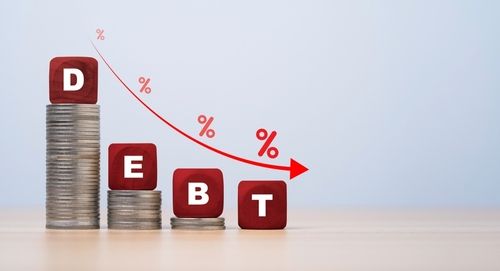How to Get a Debt Consolidation Loan in 5 Steps
Updated: 11 Apr 2025
It involves knowing how much you need to borrow, how to pre-qualify with lenders, and how to submit your application.
Written bySingSaver Team
Team
The information on this page is for educational and informational purposes only and should not be considered financial or investment advice. While we review and compare financial products to help you find the best options, we do not provide personalised recommendations or investment advisory services. Always do your own research or consult a licensed financial professional before making any financial decisions.
Managing multiple debts, particularly credit card balances, can be a significant financial challenge. If you're seeking a more streamlined approach to debt repayment in Singapore, you may have encountered terms like 'debt consolidation loan' and 'Debt Consolidation Plan' (DCP). These options offer potential pathways to simplifying your financial obligations.
This article aims to provide a clear and concise explanation of both debt consolidation loans and the DCP. We will guide you through the essential steps involved in obtaining a debt consolidation loan, and also clarify the distinctions between these two financial tools. By understanding the differences, you can make an informed decision that aligns with your individual financial circumstances.
>> COMPARE: Best debt consolidation loans
1. Figure out how much you need
The first thing you need to figure out is how much you actually need to borrow. This amount should cover all your current unsecured debts, like credit card bills and personal loans, but it's also important to make sure you can comfortably pay it back. Lenders will look at your income, how much debt you already have, and their own rules when deciding how much they'll let you borrow.
For standard Debt Consolidation Loans, the loan amount can vary significantly, often ranging from S$1,000 to S$100,000 or potentially more, depending on individual circumstances. While a strict debt-to-income ratio (DTI) may not be universally applied, lenders will meticulously evaluate your overall financial profile to ascertain a suitable loan amount.
In contrast, the Debt Consolidation Plan (DCP) is generally designed for individuals with unsecured debts, such as credit card liabilities, ranging from S$20,000 to S$120,000. A key eligibility criterion for the DCP is that the applicant's total unsecured debt must exceed 12 times their monthly income. Therefore, a careful assessment of your outstanding debts and income is crucial in determining the appropriate consolidation strategy
Saver-savvy tip
Before consolidating debt, learn how to calculate your DTI. This gives you a clear picture of your debt load.
2. Review your credit score
Alright, so after you've figured out how much you need to borrow, the next thing to look at is your credit score. You can check your credit score for free. If you're concerned about your score, consider taking steps to improve it before applying for a consolidation loan or DCP.
Now, this is where things differ a bit between a regular debt consolidation loan and the DCP.
-
Debt Consolidation Loan:
-
Your Credit Bureau Singapore (CBS) score is pretty important here. Lenders will definitely take a look at it, and also your debt-to-income ratio.
- If you've got a good credit score, you're more likely to get better interest rates and loan terms. Basically, banks see you as less of a risk.
-
On the flip side, if your credit score isn't great, you might end up with a higher interest rate, or some lenders might even turn you down. If this is the case, you might want to build your credit before applying.
-
DCP:
-
The DCP is a bit different. It's regulated by the Monetary Authority of Singapore (MAS), and they don't have strict credit score requirements.
-
Instead, they're more concerned about your income and how much unsecured debt you have (remember, it needs to be more than 12 times your monthly income).
-
Even though your credit score isn’t the main thing they look at, banks participating in the DCP might still consider it.
In short, your credit score matters a lot for a regular debt consolidation loan, but it's less of a deal-breaker for the DCP. Just something to keep in mind!
3. Shop around for loan options
Now that you know your credit score, it's time to shop around a bit. Pre-qualifying with a few lenders lets you see what kind of offers are out there without actually applying for anything yet. This way, you can compare and pick the best loan terms for you.
-
Debt Consolidation Loan:
-
Pre-qualifying with multiple lenders is a smart move. It lets you check out the different interest rates, loan terms, and loan amounts that are being offered.
-
As you pre-qualify, it's important to compare a few key features. First, take a close look at the effective interest rate (EIR). This represents the true cost of the loan, including interest, fees and the compounding effect. Remember, the lower the EIR, the more affordable the loan. For consolidation to really make sense, you'll want a loan with an EIR that's lower than that which you're currently paying on your existing debts.
-
Also, check out the loan amounts and terms. You want a lender that offers some flexibility. For example, some lenders might only give you two repayment term options, while others offer terms ranging from one to seven years. A wider range of options lets you customise the loan to fit your specific needs.
-
And don't forget to look for special perks! Some lenders offer cool features like direct payment to creditors, which means they'll send your loan proceeds straight to your creditors, saving you a step. Other perks could include rate discounts for setting up automatic payments, credit score monitoring, or even free financial education.
-
Debt Consolidation Plan (DCP):
-
Now, the DCP is a bit different. It's only offered by banks that are approved by the Monetary Authority of Singapore (MAS) here in Singapore.
-
Pre-qualification for a DCP usually means you'll need to show some documents, like proof of your income and details about all your unsecured debts.
Basically, pre-qualifying is like window-shopping for loans. It lets you compare your options and find the best fit before you commit to anything. Remember to consider both the EIR and available perks to make the best decision.
>> MORE: Pre-qualify with multiple lenders for free on Singsaver
4. Apply for your loan
You've done your homework, pre-qualified with a few lenders, and picked the best offer. Now comes the official part – submitting your loan application.
For a regular debt consolidation loan, you'll need to gather your required documents, which usually include personal identification, proof of income, and details of all your existing debts. Keep in mind that banks, financial institutions, and moneylenders might have slightly different application processes, so it's always good to double-check with each lender.
Be sure to ask about any potential origination fees that may be included in the loan. If you have a low credit score or a high debt-to-income ratio, some lenders may require a co-signer or co-borrower to be added to the loan.
When it comes to the DCP, the application process is a bit more standardized. Since DCPs are regulated by the MAS, they tend to have stricter requirements compared to regular debt consolidation loans.
You'll still need to provide proof of income and details of your unsecured debts, like credit card balances and personal loans. So, just make sure you have all your paperwork in order, and you'll be one step closer to consolidating your debts.
Ask Singsaver: Why can’t I get a debt consolidation loan or DCP?
So you've applied for a debt consolidation loan or a DCP, but you've been turned down. Now you're wondering, 'Why?' Well, there are a few common reasons why lenders might say 'no'.
For a regular debt consolidation loan, lenders are pretty strict about a few things. If your credit score isn't great, or if your debt-to-income ratio is too high, that's a red flag. They also want to see that you have a stable income, so if your income is all over the place, that could be a problem.
And of course, if you didn't provide all the required documents, that's another reason for rejection. If you are having trouble getting a regular debt consolidation loan, and have poor credit, consider turning to online lenders that offer debt consolidation loans for bad credit.
When it comes to the DCP, the reasons for rejection are a bit different. Since it's regulated by MAS, they have specific income and debt level requirements. If you don't meet those, you won't qualify. Also, if you have a history of not paying your bills on time, that's going to hurt your chances.
If you are having trouble qualifying for either loan, you may want to consider alternative options such as a debt management plan, or debt settlement. These options may be more suitable for your financial situation.
5. Get your funding and start clearing your debts
So you've jumped through all the hoops, and your loan is finally approved! Now comes the good part – getting funded and paying off those debts.
For a regular debt consolidation loan, the lender will usually pay the loan amount directly to your creditors, clearing out your existing unsecured debts, and maybe even some secured ones. Now, instead of juggling multiple payments, you'll just have one single monthly payment to make, based on the terms you agreed to.
The nice thing about these loans is that they're often more flexible than DCPs. Loan terms can range from one to five years, and you might even be able to negotiate the repayment amount based on what you can comfortably afford.
With the Debt Consolidation Plan (DCP), the process is similar – the bank pays off your creditors. But you'll make one fixed monthly payment directly to the MAS-approved bank at a lower interest rate, usually less than 10% per year.
However, DCPs are generally less flexible when it comes to the loan amount and repayment duration compared to regular debt consolidation loans.
So, whether you're dealing with a regular debt consolidation loan or a DCP, the goal is the same: simplify your debt and make it more manageable.
Take control of your debt
Simplify your repayments and reduce financial stress. Explore debt consolidation loan options in Singapore.
Stay ahead in everything finance
Subscribe to our newsletter and receive insightful articles, exclusive tips, and the latest financial news, delivered straight to your inbox.
About the author
SingSaver Team
At SingSaver, we make personal finance accessible with easy to understand personal finance reads, tools and money hacks that simplify all of life’s financial decisions for you.

